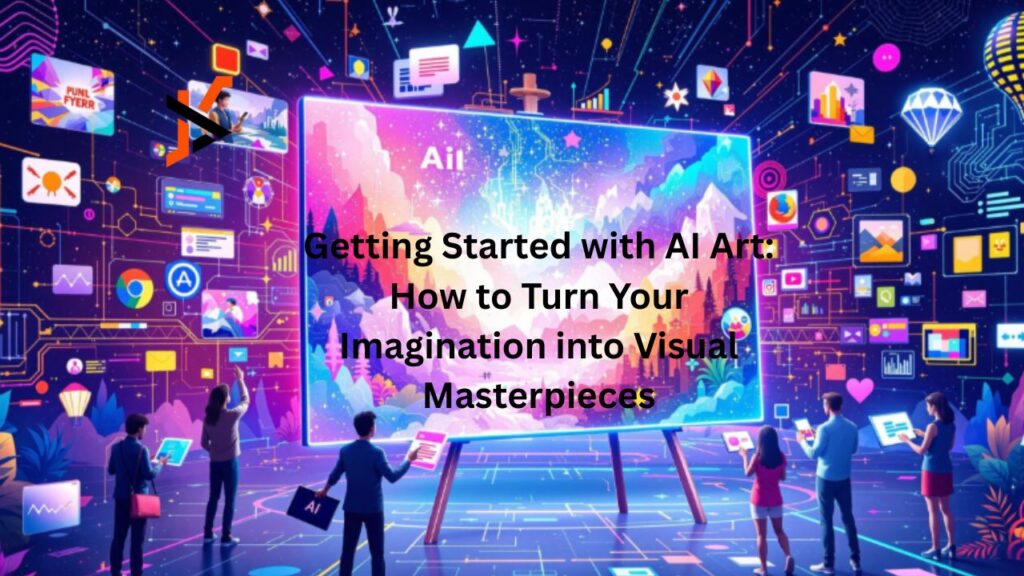A profound shift is underway in the creative world. The once insurmountable barrier between imagination and execution has been lowered by generative Artificial Intelligence. You no longer need years of training in oil painting or complex 3D modeling software to bring a fantastical vision to life. With the right techniques and tools, AI art allows anyone to turn a simple text prompt into a visual masterpiece.
This guide is designed for the absolute beginner, walking you through the fundamental concepts, essential tools, and advanced prompting techniques needed to master this revolutionary new medium.
The Fundamentals of Generative Art
At its core, AI art relies on Large Language Models (LLMs) that have been trained on vast libraries of images and their corresponding text descriptions. When you type a prompt, the AI doesn’t just search the web; it interprets your words and attempts to synthesize a brand-new image based on the patterns, styles, and concepts it learned during its training.
1. Understanding the Tools: The Engine Room
Choosing the right tool is the first step. The market is full of specialized and generalized platforms, each with a unique strengths and price points.
- Dedicated Generative Platforms (e.g., Midjourney, Stable Diffusion): These tools often offer the highest fidelity and control, catering to users who prioritize artistic quality and specific stylistic output. They generally require deeper prompt knowledge.
- All-in-One Creative Suites (e.g., Hotpot.ai): For beginners and small business owners who need volume, variety, and efficiency, an integrated platform is often more practical. These suites bundle image generation with useful utilities like background removal, restoration, and templates. These all-in-one platforms are proving to be the essential and efficient creative partner for diverse needs, as demonstrated in the detailed review, The All-in-One AI Creative Partner You Need. They help you handle the entire workflow without jumping between different apps.
2. The Golden Rule: Garbage In, Garbage Out
The single biggest mistake a beginner makes is using overly simple prompts. A prompt like “A dragon” will produce a generic, often uninspired result. The AI needs direction, style, and context. Your role as the artist is to provide the “metadata” of the image you envision.
Prompt Engineering: The Language of Creation
The key to creating masterpieces lies in Prompt Engineering—the art of structuring your text instructions to guide the AI’s generative process. A great prompt should consist of four main components.
Component 1: The Subject (What)
This defines the main focus of the image. Be specific.
- Weak: Dog.
- Strong: A majestic Golden Retriever wearing a tiny brass monocle.
Component 2: The Style (How)
This tells the AI how to render the subject, drawing on art history, photography, and digital mediums. This is where you achieve aesthetic differentiation.
- Style Modifiers: Digital painting, hyper-detailed, cinematic lighting, watercolor, Ukiyo-e woodblock, unreal engine render, photorealistic, matte painting, abstract expressionism.
- Example: …rendered in the style of Art Nouveau posters.
Component 3: The Lighting and Composition (Vibe)
These technical terms influence the mood, depth, and drama of the scene, transforming a flat image into a dynamic visual.
- Lighting Modifiers: Volumetric lighting, golden hour, deep shadow, rim lighting, neon glow, subsurface scattering.
- Composition Modifiers: Wide-angle shot, macro photography, 8k resolution, low angle, extreme close-up, highly detailed.
- Example: …with dramatic chiaroscuro lighting and a shallow depth of field.
Component 4: Negative Prompts (Exclusions)
Many advanced tools allow you to specify what you don’t want. This is critical for weeding out common AI flaws or undesired elements.
- Common Negative Prompts: Low quality, blurry, mutated, duplicated limbs, text, watermark, bad anatomy.
Putting It All Together: The Master Prompt
By combining these four elements, you can create a highly refined instruction:
“A majestic Golden Retriever wearing a tiny brass monocle, looking out over a fantastical, glowing neon cityscape, rendered in the style of Art Nouveau posters, with dramatic volumetric lighting and a shallow depth of field. –no blurry, mutated, duplicated limbs.”
Expanding Your Creative Horizon
AI is not limited to visual arts; it is transforming the entire creative spectrum. Understanding these other domains can help you create truly mixed-media projects.
Text-to-Music
Just as text generates images, advanced models are now generating entirely new musical compositions. This revolution in music creation, where complex reasoning models are leading the global AI music revolution AI music revolution, means you can request a “haunting orchestral score for a spaceship crash” and receive a custom, royalty-free track to accompany your visual masterpiece.
Interactivity and Storytelling
The next evolution of AI art lies in using these generated visuals as starting points for interactive stories or video games. Using AI to generate characters, environments, and even simple scripts allows a solo developer to rapidly prototype complex narrative worlds. This integration elevates the AI from a mere tool to a true collaborative partner.
Ethical Considerations for the New Creator
As you embark on your AI art journey, it’s crucial to understand the ethical landscape:
- Transparency: Be open about using AI. It is a powerful tool, not a deception.
- Originality: Use AI to synthesize new works, not to simply copy or mimic the style of a living artist excessively, which can raise intellectual property concerns.
- Ownership: Always review the terms of service for the AI platform you use. Most commercial platforms grant you ownership rights over the images you generate, provided you adhere to their terms.
AI art is a portal to unprecedented creative freedom. By mastering the language of the prompt and understanding the tools at your disposal, you can bypass traditional technical roadblocks and focus purely on the joy of creating. What magnificent vision will you bring forth first?

